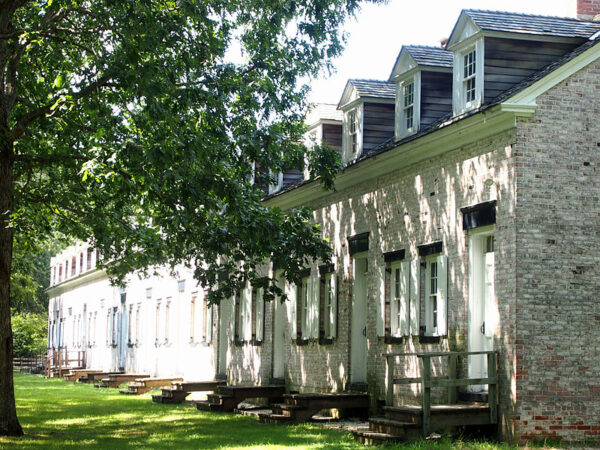On April 27, 1822, master mechanic and engineer James P. Allaire purchased a number of tracts of land, mostly in southern Monmouth County, from Wm. Newbold, which included an iron foundry. Allaire sought to develop this site to produce casting and pig iron for his Allaire Works steamship engine business, and he named the new site the Howell Works to help differentiate the two facilities. During the next 10-15 years, he intensively developed the site, building homes and industrial buildings and creating a self-sustained community of 400 people that would integrate all of the economic components needed to support Allaire’s businesses. By 1833, a post office, school for worker’s children, blacksmith shop (pictured), carpenter’s shop, carriage house, manager’s house, foreman’s cottage and chapel were in place. The company store was completed in 1835. The village was at its most prosperous in 1836 but began to decline as richer deposits of iron and coal in Pennsylvania made production cheaper and the use of charcoal in the furnaces was not as efficient as coal. By 1848 production was in steady decline, and the furnace ceased to operate. Today the site remains as a memorial to the social thought, experience, and planning of Industrial Era America. Thirteen of the original buildings are available to explore and experience life in the 19th century. A living history museum, The Historic Village at Allaire brings the past alive through reenactments and interpretive programs.
Sources:
Monmouth Democrat. (1850). Freehold, N.J., December 26, 1850, P. 3.
Featured image credit: The Historic Village at Allaire. Available: https://allairevillage.org/


Leave a Reply